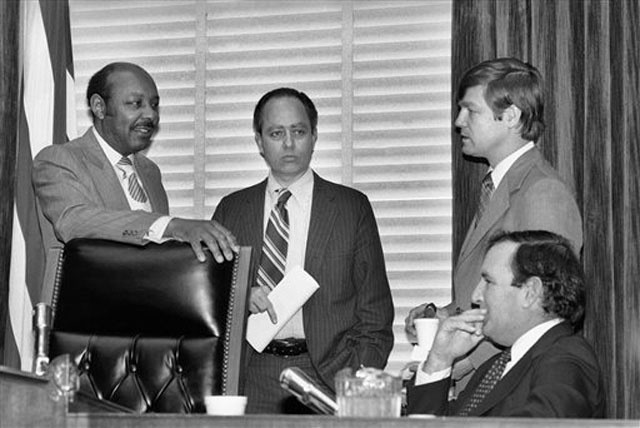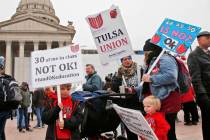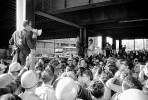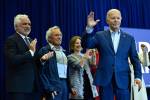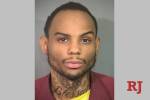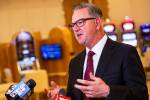Kennedy assassination changed young lawyer’s future
On the morning of Nov. 22, 1963, G. Robert Blakey was a young lawyer with a bright future in the U.S. Department of Justice.
A graduate of the Notre Dame School of Law, he almost immediately joined the DOJ Criminal Division as a special attorney in the Organized Crime and Racketeering Section. Blakey was on hand when Attorney General Robert Kennedy took over the department and focused on busting mobsters, corrupt union officials and crooked politicians. The two worked side by side.
“I was with Bobby Kennedy the day of the assassination in an organized crime meeting,” Blakey, 78, recalled recently before an appearance at the National Museum of Organized Crime and Law Enforcement. “We split for lunch. That meeting did not come back.”
There was a news bulletin from Dallas. President John F. Kennedy had been shot and killed. Lee Harvey Oswald was under arrest, but a day later, he was shot and killed by Jack Ruby.
The world was in shock, and America was forever changed.
Perhaps best known these days as a founding father of the Racketeer Influenced and Corrupt Organizations Act, Blakey remained at the DOJ less than a year after the assassination. He returned to Notre Dame to teach law. A few years later, he went back to Washington as counsel to the Senate Judiciary Committee.
When the Warren Commission report was published, Blakey saw no reason to doubt its thoroughness or its conclusion that Oswald had acted alone despite the fact rumors of a conspiracy swirled about the event from the very start. So when Blakey was asked in 1977 to serve as chief counsel to the House Select Committee on Assassinations, which investigated the murders of President Kennedy and Dr. Martin Luther King Jr., he wasn’t sure he would have much to contribute.
He had to be talked into meeting with committee leadership by his wife, Elaine.
“She said you owe it to yourself to go and talk to them,” Blakey said. “So I went and talked to Mr. (Louis) Stokes, who was the new chairman. And I told him right up front that I had read the Warren Commission and I agreed with it. I didn’t think there was a conspiracy. But my mind was open. And if what he wanted was an objective, professional investigation, if he would support me — and he did — I would do everything I could to bring that about.”
And he did. Press leaks were patched. Key witnesses were interviewed in secret. Blakey used his substantial knowledge of the inner workings of organized crime to follow the growing sense that a mob conspiracy might have been behind the assassination plot.
“There’s a certain irony to this,” Blakey said. “I went in thinking the mob had nothing to do with it. I’d chased them all my life. It was a high-risk venture. They were angry, but how angry can you get? And I said I can prove they didn’t do it. I knew the FBI had conducted (wiretap) surveillance against the major figures of the mob out here in Vegas. The IRS was doing it right out here, and they (FBI) were doing it wrong. And the IRS lost their case.”
He assembled a team that analyzed the FBI surveillance for possible signs of a conspiracy.
“I thought the answer would be no,” Blakey recalled. “But the answer, it wasn’t really no.
“… In the early stages they were talking about, ‘No, don’t think that way.’ And later on they began seriously discussing (whether they) should take Kennedy out. And the leadership was saying, ‘No, don’t do it.’ The troops were getting angry.”
Trouble is, the wiretaps didn’t paint a complete picture.
“I made a mistake in assuming that the surveillance was comprehensive,” Blakey said. “Guess where it wasn’t comprehensive? New Orleans and Dallas — the only two areas that I cared about.”
In the end, the House committee contradicted the Warren Commission and concluded Kennedy was the likely victim of a criminal conspiracy.
“We came to the conclusion that there were two shooters in the plaza,” he said. “The Warren Commission said one. We thought there were four shots. The Warren Commission said two for sure, maybe three. And the popular myth is that we did it based on acoustical tests only. Not true. It was based on the witnesses and the acoustical evidence. And we treated the witnesses as corroborating the acoustics and the acoustics corroborating the witnesses. The acoustics have been trashed since then, thoroughly. I’m unpersuaded. I think they’re still valid.
“And the reason I think they’re still valid is they fit hand in glove, timing and direction, with all the other evidence. And now if there are two shooters in the plaza — i.e. a conspiracy — then the lone nut (theory) doesn’t hack it anymore. And you have to look to Oswald’s associates.
“And who is Jack Ruby? They told us he had no connections to organized crime.”
And he was off again, punching, counterpunching, arguing even minute details.
Half a century after the fact, G. Robert Blakey remained adamant and animated as he made point after point. Although he is a gifted legal scholar, he has spent most of his life exploring this issue.
Blakey works every day in the American court of public opinion, where a nation still wonders about that awful day in Dallas, and the Kennedy assassination case never ends.
John L. Smith’s column appears Sunday, Tuesday, Wednesday and Friday. E-mail him at jsmith@reviewjournal.com or call (702) 383-0295.



